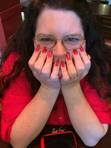Making the Most of Your Setting
by Mindy Obenhaus
Stories are comprised of different elements. Characters, plot and setting being the main three. Yet every writer writes differently. Some start with plot. Others start with characters and then create a plot that will generate the most conflict possible. However, there are times when a writer is so inspired by a setting that they just have to write a story about it.
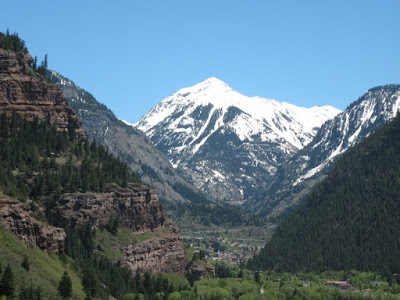 That’s what happened to me. The first time my mother-in-law introduced me to Ouray, Colorado, I knew I had to use it as a setting for a story. The town was so beautiful and unique that I wanted to tell everyone about it. Six books later, I’m still singing the praises of my most favorite place.
That’s what happened to me. The first time my mother-in-law introduced me to Ouray, Colorado, I knew I had to use it as a setting for a story. The town was so beautiful and unique that I wanted to tell everyone about it. Six books later, I’m still singing the praises of my most favorite place.

How do you make setting an integral part of your story?
A writer’s first instinct might be to throw in loads of description. But if you’ve spent any time here in Seekerville, you know that won’t fly. We cannot wax poetically for paragraphs on end because editors do not like that and, frankly, it can get boring. And rule number one is don’t bore the reader.
So whether your setting is a real place or simply lives in your mind, here are a few ways to make the most of it without beating readers over the head.
Give at least one character a job or hobby that is unique to your setting
Is there something about your setting that makes it different from other places? Ouray is the Jeeping Capital of the World.
 It’s also America’s ice climbing capital.
It’s also America’s ice climbing capital.
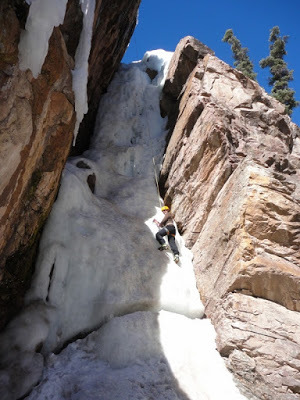 Yes, that's really me.So, naturally, I’ve incorporated a hero and a heroine who’ve owned Jeep tour companies into my stories. I’ve also had an avid ice climber and mountain guide. And then there’s Ouray’s rich mining history, which still goes on today, allowing me to have a hero who was a miner.
Yes, that's really me.So, naturally, I’ve incorporated a hero and a heroine who’ve owned Jeep tour companies into my stories. I’ve also had an avid ice climber and mountain guide. And then there’s Ouray’s rich mining history, which still goes on today, allowing me to have a hero who was a miner.During the gold rush, Ouray, population 1000, was a thriving mining town that boasted more than 10,000 residents whose legacies still live on in the abundance of historic homes and other buildings, making it ripe for bed-and-breakfast owners and restoration projects.
Think about your story. Are there any jobs or hobbies unique to its setting?
Setting can create limitations
Ouray is a tiny town with one grocer, a hardware store and no drive-thru restaurants. It’s a minimum of thirty minutes to the nearest fast-food restaurant, supercenter, home improvement store and hospital. That means that when my self-reliant heroine has a flat tire on her motorcycle and needs a plug to fix it, but the hardware store is all out, she’s stuck.
Yet while these limitations may force the writer to be more creative, the good news is that they can also create conflict for our characters. Like when the clerk at the hardware store suggests our heroine check with the Jeep tour company across the street, where she would be forced to ask our hero, the one man she does not want help from, to help her out.
Ask yourself, does my setting present any limitations?
Put your setting to work for you
When I was writing my first book, The Doctor’s Family Reunion, I knew that something potentially dangerous was going to happen to one of my characters. I researched diseases and ailments until I was blue in the face before I finally decided what should be wrong with them. But when I told my husband, he said, “Well, that’s silly. Why not use your setting?”
Talk about a V8 moment. Here I was trying to contrive something that would put my character in danger, when I could have that danger grow organically out of my setting. Which, in the end, made a much stronger story.
Here’s an example.
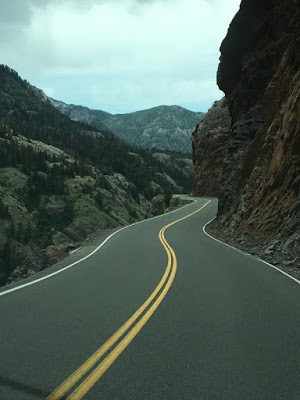 The main highway that leads in and out of Ouray can be very scary to drive even in the best of conditions, with its harrowing curves and sheer drop-offs. But that drive can be downright treacherous during a winter storm. And what if they close the road, which often happens. Then our character is either trapped in Ouray or forced to find an alternative route that could take them someplace unexpected or make them miss the flight they really have to be on.Going back to your manuscript, how can your setting wreak havoc with your characters?
The main highway that leads in and out of Ouray can be very scary to drive even in the best of conditions, with its harrowing curves and sheer drop-offs. But that drive can be downright treacherous during a winter storm. And what if they close the road, which often happens. Then our character is either trapped in Ouray or forced to find an alternative route that could take them someplace unexpected or make them miss the flight they really have to be on.Going back to your manuscript, how can your setting wreak havoc with your characters?Get to know your setting
Whether your setting is real or fictitious, you owe it to yourself and your readers to learn everything you can about it. What makes it special? If it’s a real place, how do locals view things versus how visitors see them? Learn what they might do or where they might go.
In Ouray, while all the tourists are flocking to Yankee Boy Basin, the locals might head to some little known place like Silver Basin.
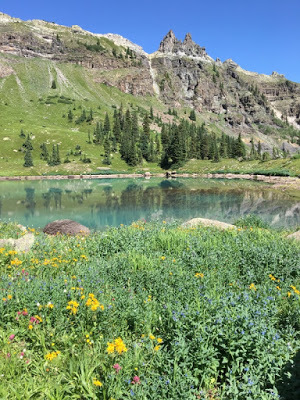 Had it not been for my friend Brandy who owns a Jeep tour company in Ouray, I might have never discovered Silver Basin.
Had it not been for my friend Brandy who owns a Jeep tour company in Ouray, I might have never discovered Silver Basin.Have you taken the time to get to know your setting?
Setting is an important part of any story and can be a powerful tool. With a little thought and planning, or research and exploration, you can make the most of your setting, putting it to work for you in ways you might never have imagined. And in the end, your story will be better for it.
Now it's your turn. What’s your first step in creating a story? Plot, characters or setting? Do you take the time to think about your setting?
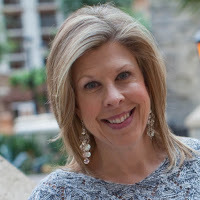
Three-time Carol Award nominee, Mindy Obenhaus , writes contemporary romance for Love Inspired Books. She’s passionate about touching readers with Biblical truths in an entertaining, and sometimes adventurous, manner. When she’s not writing, she enjoys cooking and spending time with her grandchildren at her Texas ranch. Learn more at www.MindyObenhaus.com
Published on May 01, 2018 21:01
No comments have been added yet.

